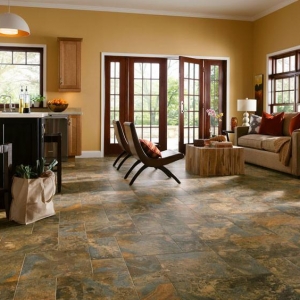In marine environments, especially on oil tankers, chemical carriers, offshore platforms, and industrial vessels, hazardous atmospheres are not uncommon. Flammable gases, vapors, and dust can create ignition risks if not properly managed. Explosion-proof lighting is therefore a critical component of marine safety infrastructure. Understanding zoning and classification in explosion-proof lighting is essential for ensuring safe and compliant lighting installations aboard marine vessels and offshore structures.
This article explains how zoning and classification systems work in explosion-proof lighting for marine applications, the standards that guide these systems, and the importance of proper selection and maintenance.

Understanding Hazardous Areas in Marine Environments
A hazardous area is defined as any location where flammable gases, vapors, or dust may be present in sufficient concentrations to cause an explosion if ignited. In marine settings, these areas can include:
Fuel storage rooms and bunkering stations
Pump rooms
Cargo holds carrying flammable substances
Battery rooms
Engine compartments
Offshore drilling platforms
Zoning: Identifying the Level of Hazard
Hazardous locations are classified into zones based on the frequency and duration of the presence of explosive atmospheres. Two major systems are used internationally:
a. IEC/ATEX (Used in Europe and globally)
Zone 0: Explosive atmosphere is present continuously or for long periods.
Zone 1: Explosive atmosphere is likely to occur in normal operation occasionally.
Zone 2: Explosive atmosphere is not likely to occur in normal operation, or if it does, it will exist only for a short time.

b. NEC (Used primarily in North America)
Class I, Division 1: Hazardous atmosphere present during normal operation.
Class I, Division 2: Hazardous atmosphere present only under abnormal conditions.
For marine use, the IEC system is most commonly applied due to its alignment with IMO and SOLAS regulations.
Explosion Group and Temperature Class
Besides zoning, hazardous areas are also classified by:
a. Gas Group (Explosion Group)
Group IIA: Propane and similar gases (lowest risk)
Group IIB: Ethylene and similar gases
Group IIC: Hydrogen and acetylene (highest risk)
b. Temperature Class (T-rating)
Defines the maximum surface temperature of the equipment, which must be lower than the ignition temperature of the surrounding atmosphere. Ranges include:
T1 (≤450°C) to T6 (≤85°C)
These classifications help ensure that the selected lighting cannot become a source of ignition.
Explosion-proof Lighting Types for Marine Use
Explosion-proof lighting systems are specially designed to contain any internal explosion and prevent ignition of surrounding hazardous gases. Common types include:
Flameproof (Ex d) enclosures that can withstand internal explosions
Increased Safety (Ex e) lighting designed to prevent arcs or sparks
Encapsulated (Ex m) or intrinsically safe (Ex i) lighting for sensitive areas
Each fixture must carry markings indicating the zone, gas group, and temperature class it is certified for.

Selecting the Right Lighting for Marine Hazardous Zones
Proper selection must consider:
The zone classification (Zone 0, 1, or 2)
The specific explosive gases present
Temperature ratings of nearby substances
Environmental factors such as saltwater corrosion and vibration
Certification by reputable bodies like IECEx, ATEX, UL, or CSA is essential. Lighting equipment should also comply with marine-specific standards like IEC 60092-306 (Electrical Installations in Ships – Equipment – Lighting) and IMO regulations.
Installation and Maintenance Considerations
Proper sealing and enclosure integrity must be maintained during installation and repair.
Regular inspections should check for cracks, loose fittings, or corrosion.
Cable glands and junction boxes must be explosion-proof rated.
Documentation and labeling are critical for compliance and maintenance safety.
Summary
Explosion-proof lighting in marine environments plays a pivotal role in preventing catastrophic incidents caused by ignitable atmospheres. Correct zoning and classification ensure that the right lighting is installed in the right place, aligned with both international standards and practical safety needs. With careful planning, selection, and maintenance, marine operators can achieve robust lighting systems that safeguard personnel, assets, and the environment.







